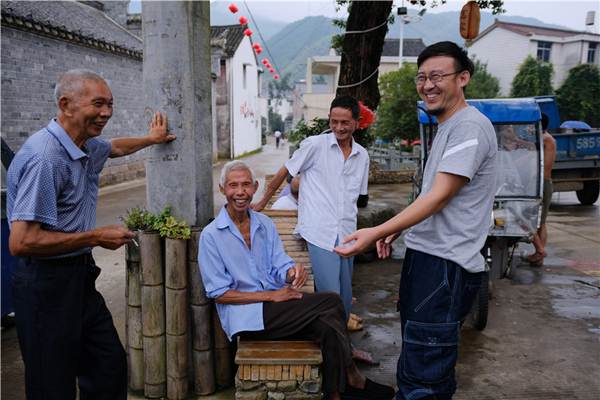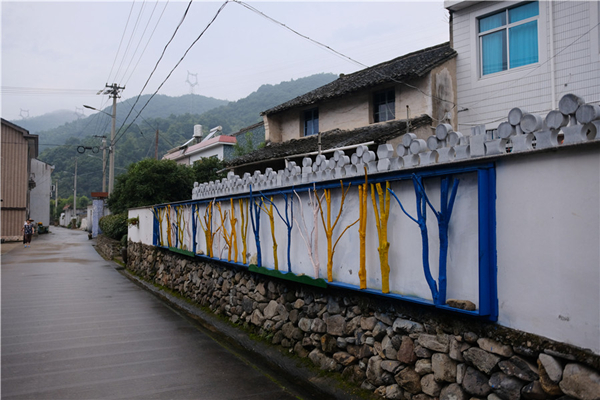Home is where the art is

Cong Zhiqiang (right), an associate professor at Renmin University of China's School of Arts, talks with residents of Gejia village in Ninghai county, Zhejiang province, on July 8, 2020. [Photo by Xiao Da/chinadaily.com.cn]
For rural farmers in Gejia village, the world of art and design is no longer out of reach. Art is coming down to earth in rural households.
It is possible thanks to an experimental workshop by Cong Zhiqiang, an associate art professor at Renmin University of China in Beijing.
"In the industrial age, design was mainly used to create things. But in villages in Zhejiang, I think design can also be applied to reshape rural farmers' way of life, the way they respond to their surroundings and the outside world. It enables them to empower themselves when seeking changes in social relations," said Cong, who has been dedicated to art and design for more than two decades.
Unlike many designers who use art to provide new looks in villages by plastering modern images on empty walls or by renovating the architecture, Cong has found a new way to beautify the countryside, highlighting the role of villagers in designing their own art decor in their courtyards.
"I have learned of cases in Europe, Japan and South Korea where residents were involved, and changes were made more easily and effectively," he said.
Cong's idea has received a warm response from local officials in Ninghai, who have actively supported turning his concept into reality.

Tree branches in bright colors are displayed in Gejia village of Ninghai, Zhejiang province. [Photo by Xiao Da/chinadaily.com.cn]
Gejia village, which is located in the northern part of Ninghai, became a pilot site for the professor to put his theory into practice in April last year after he and the government reached a consensus. Within one year, significant changes had taken place.
Residents are now a primary force in the village's environmental improvement process. They volunteer to decorate public spaces in the village under the guidance of Cong and make works of art, flower pots, benches, lamps and even pavilions themselves.
A year ago, Gejia was just an ordinary village with moderate development. The majority of residents made a living by growing plants.
Cong said he chose it for that very reason — because it was ordinary.
"Once the theory proves effective here, it can be duplicated in many other Chinese villages," he said.

 Print
Print Mail
Mail
 20 Cultural Symbols
20 Cultural Symbols Why Zhejiang
Why Zhejiang Experiencing high-tech products at WIC
Experiencing high-tech products at WIC Zhejiang Release
Zhejiang Release Zhejiang News
Zhejiang News